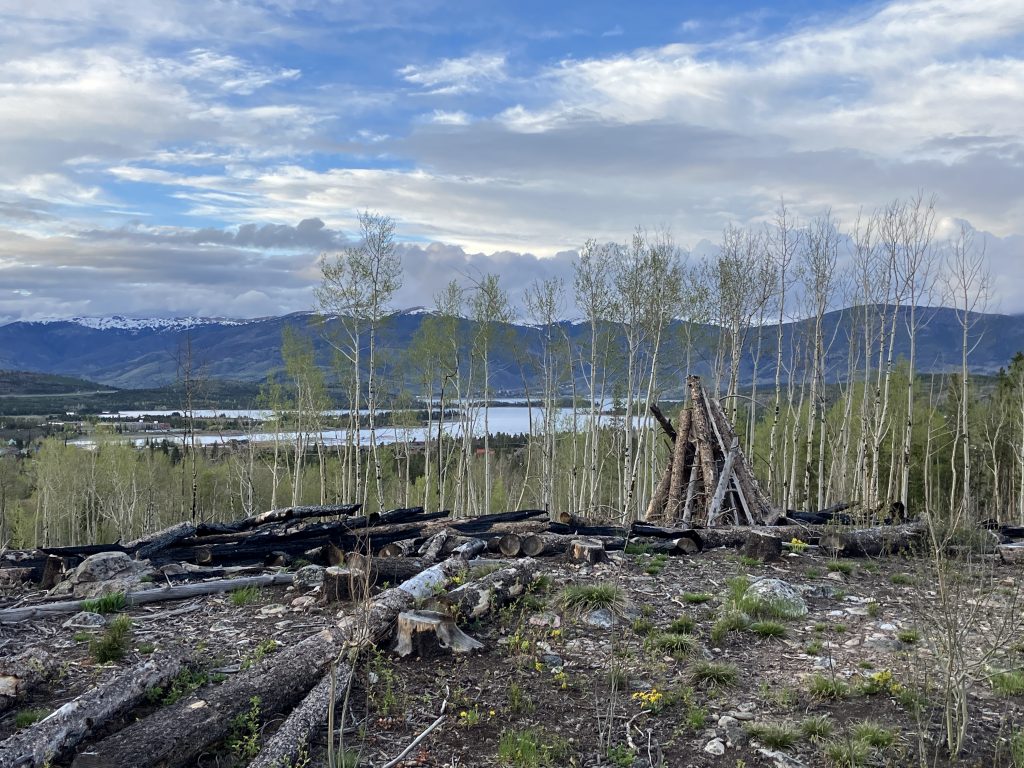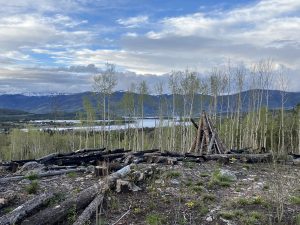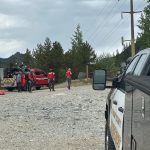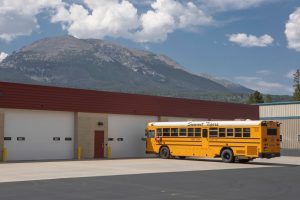Summit commissioners support funding Frisco Backyard fuel reduction project

Ryan Spencer/Summit Daily News
At a July 15 work session, the Summit Board of County Commissioners expressed concerns that a staff-recommended funding contribution to a fuel reduction project in the Frisco Backyard was too high.
Assistant County Manager Steve Greer came back Tuesday, Aug. 5, with more information and a revised recommendation. Instead of the originally proposed $990,000, Greer said the county could contribute $890,000 and still ensure the first phase of the project will be fully funded.
The Frisco Backyard comprises parts of Mount Royal, Miners Creek, Rainbow Lake, Ophir Mountain and Gold Hill. The full project, phased over 10 years, will include 1,250 acres of wildfire fuel reduction activities and approximately 25 miles of trail work, according to a county staff memo. The first phase will reduce fuels in a prioritized 500-acre area.
When presenting to the board July 15, Greer said the county’s contribution would come out of the Strong Futures Wildfire Fund, which he said had just under $1 million in non-allocated funds. A $990,000 contribution would use nearly the entire fund.
Finance director Dave Reynolds explained that the fund had $1.2 million in reserves at the end of 2024 and is forecasted to grow by $200,000 each year, meaning at the end of 2025, it is forecast to have $1.4 million in reserves.
Greer wrote in an email that his original non-allocated funds figure was from a two-year-old budget. Before the August meeting, he spoke with the county finance department and updated the figure based on savings from expenditures and money saved from receiving some grants.
At the Aug. 5 meeting, Greer reflected what Reynolds said in July, saying the fund has about $1.4 million in non-allocated funds, meaning a $890,000 contribution would leave around $500,000 in reserves.
He added that the fund has around $1.6 million in allocated funds, but it is likely not all those funds will be used, adding to the end-of-year reserve total.
The $500,000 or more in reserves could be used for wildfire-related projects that come up throughout the year or emergencies, Greer said.
“We have used money in the past for blowdowns and things that happen where we need to get a crew out there on an emergency basis to take care of things that are outside of our budget,” Greer said.
A memo written by Greer for the Aug. 5 meeting listed the contributions to the project from other entities. Frisco and the U.S. Forest Service are contributing $250,000 and $420,000, respectively, for the environmental assessment required by the National Environmental Policy Act.
Denver Water is contributing $350,000, and $450,000 is coming from the federal Bipartisan Infrastructure Law. The Nature Conservancy has expressed interest in contributing but has not made a commitment, the memo stated.
Commissioner Eric Mamula questioned why the Forest Service is contributing about half of what Summit County would when the federal agency manages the land on which work will be completed.
“In a federal government that’s draining funding from important things like this, we need to cover them?” Mamula said. “Everything (Greer) wrote, I totally agree. I get that this is important. I’m okay with the total amount, but I don’t understand why we would be the major partner when it’s not our property.”
Greer said the county has assets adjacent to the land that the project would help protect. He said the forest land where work will take place is in “bad shape,” with many fallen and standing dead trees.
“If that were, God forbid, to burn, it would wipe out a lot of county assets,” Greer said. “Billions of dollars worth of county assets.”
The county’s contribution is an “investment,” Greer said, to protect that property adjacent to Forest Service land. He also said funding projects like this are why the wildfire fund exists and that it has money available.
Mamula said he understood Greer’s points and thought the $890,000 contribution was reasonable, but he would have liked the Forest Service to contribute more.
“Why doesn’t the Forest Service — I mean, I know why,” Mamula said. “I know the answer to the question I’m asking. I’m just actually stating my frustration with the federal government.”
Commissioner Tamara Pogue also said she approved of the new contribution amount but requested the county attach requirements to its support. She said she would like to have a requirement for “adequate community stakeholding” and another that would prioritize protecting county assets if there are any delays in the work.
Commissioner Nina Waters said she agreed with what Mamula and Pogue had said. She said the Frisco Backyard is a large, high-priority fuel reduction project, but because it mostly benefits Frisco, she would like the board to fund fuel reduction projects elsewhere in the county in the future.
“I’d like to share the love a little bit more,” Waters said.
The commissioners discussed the project in a work session, so they did not take any official vote on whether or not to contribute the $890,000.

Support Local Journalism

Support Local Journalism
As a Summit Daily News reader, you make our work possible.
Summit Daily is embarking on a multiyear project to digitize its archives going back to 1989 and make them available to the public in partnership with the Colorado Historic Newspapers Collection. The full project is expected to cost about $165,000. All donations made in 2023 will go directly toward this project.
Every contribution, no matter the size, will make a difference.








